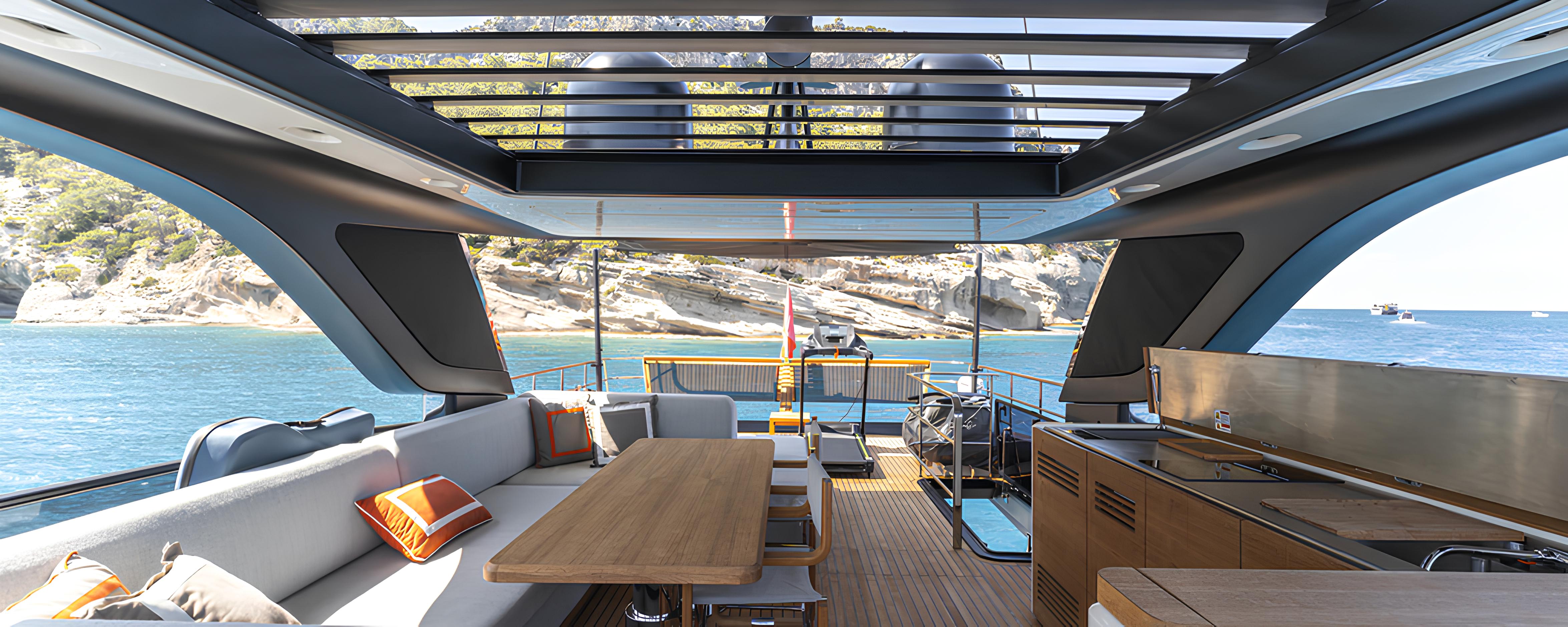
Flybridge yachts
for charter
FOR CHARTER
FOR CHARTER
Luxury yachts for charter
-
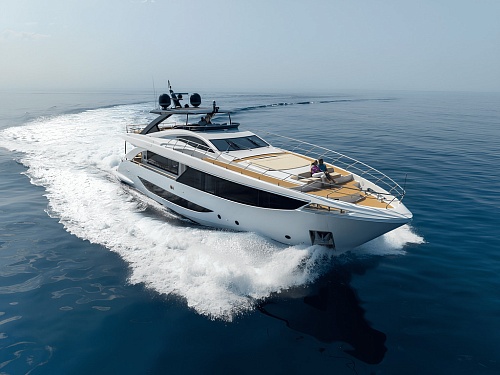
Luxury yachts for charter "BACCARAT""F100"
-

Luxury yachts for charter "DADDY'S DREAM 888""29DP"
-

Luxury yachts for charter "DAMARI""960"
-

Luxury yachts for charter "DESTINO""SL96"
-
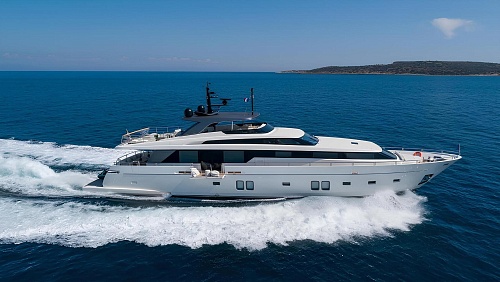
Luxury yachts for charter "DINAIA""SL106"
-

Luxury yachts for charter "EPIC""1000"
-

Luxury yachts for charter "FATSA""SD96"
-

Luxury yachts for charter "GALENA""100 Explorer"
-

Luxury yachts for charter "GRANDE 27M""Grande 27M"
-
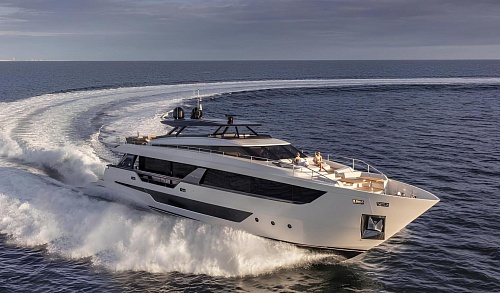
Luxury yachts for charter "H&CO""1000"
-

Luxury yachts for charter "ISOTTA""1000"
-

Luxury yachts for charter "LADY VOLANTIS""115 Sport Yacht"
-
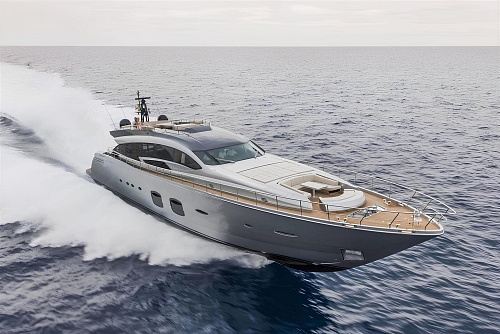
Luxury yachts for charter "LEVANTINE II""108"
-

Luxury yachts for charter "NOROADER""116 Yacht"
-

Luxury yachts for charter "ON TIME""SX112"
-
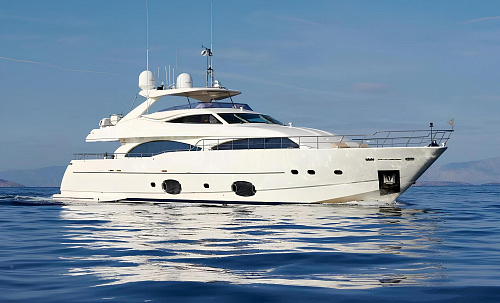
Luxury yachts for charter "PAREAKKI""97'"
-

Luxury yachts for charter "PRIMUS""SD96"
-
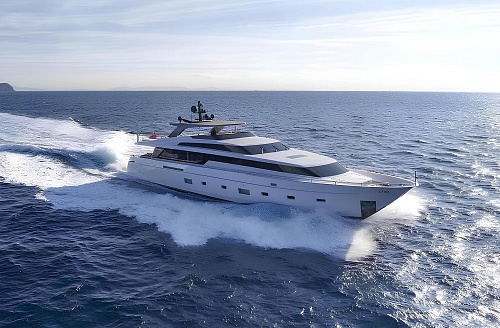
Luxury yachts for charter "RARE DIAMOND""SL104"
-
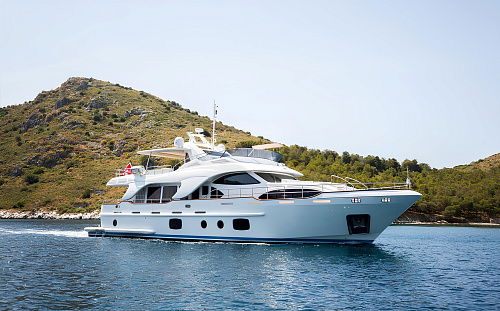
Luxury yachts for charter "REBECCA V""Legend 85"
-
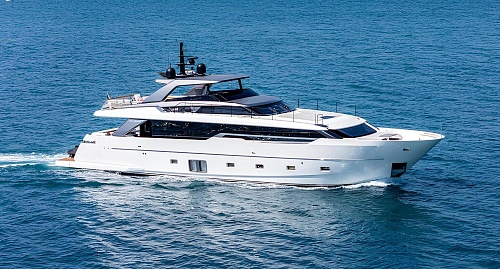
Luxury yachts for charter "REGINE""SL96"
-

Luxury yachts for charter "RIVIERA LIVING ""35M"
-
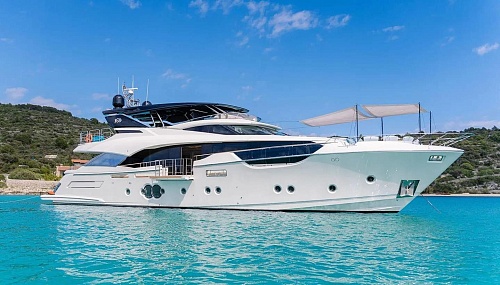
Luxury yachts for charter "ROCCO""MCY 96"
-
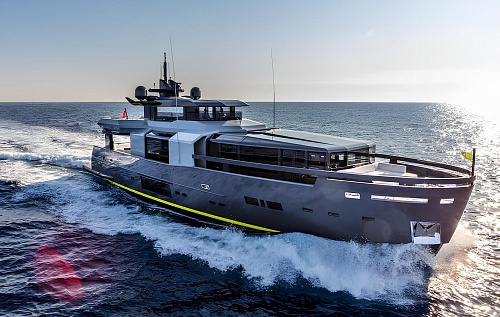
Luxury yachts for charter "SEA CORAL II""A105"
-

Luxury yachts for charter "SEMELA""Navetta 75"
-
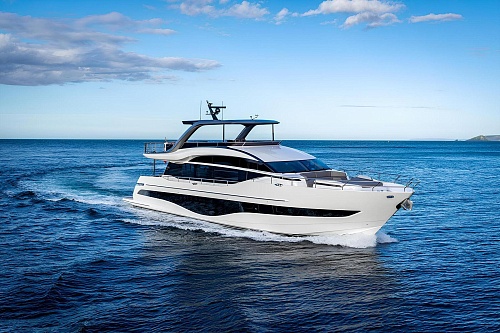
Luxury yachts for charter "SIDURI III""Y85"
-
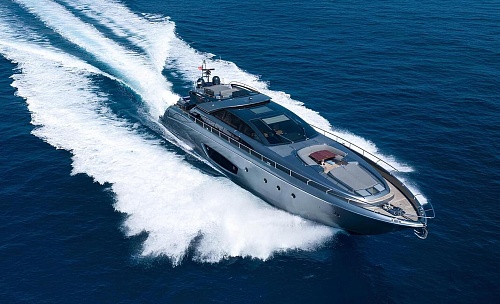
Luxury yachts for charter "SILVER BREEZE""86' Domino"
-

Luxury yachts for charter "YVONNE""Navetta 28"
Key Features of a Flybridge Yacht
A flybridge yacht features two levels: the main deck and the upper deck (flybridge). This layout provides additional space for relaxation and enhanced navigation options.
Pros and Cons
Pros:
- Spacious outdoor and indoor living areas across multiple levels
- Dual helm stations for flexible navigation
- Panoramic views from the elevated flybridge
- Ample storage and space for water toys
Cons:
- Higher center of gravity, which may affect stability
- Less suited for high-speed, sporty cruising
Two Levels of Comfort
A flybridge yacht offers two distinct levels for both navigation and relaxation.
- Main Deck: Features the main salon and the primary helm station.
- Flybridge: A dedicated space for leisure and entertainment.
Flybridge Lounge Area
The flybridge is typically equipped with:
- Sun loungers for relaxation
- Bar with a refrigerator
- Ice maker
- Barbecue grill
- Bimini top or hardtop for sun protection
Dual Helm Stations
The yacht can be operated from either the main helm or the flybridge helm, with both stations fully synchronized. This provides the captain with greater flexibility when navigating.
Flybridge yachts differ from hardtop yachts by featuring a second level, providing enhanced comfort for extended cruising and relaxation.
Flybridge yachts are produced by leading shipyards such as:
- Azimut
- Princess Yachts
- Sunseeker
- Sanlorenzo
- Absolute Yachts
The primary material used in the construction of flybridge yachts is fiberglass, which makes the yachts lighter and more resistant to external elements. This material is highly valued for its durability, corrosion resistance, and ease of maintenance, ensuring that the yachts remain in top condition for longer periods, even in challenging marine environments.
Depending on the size, the construction of a flybridge yacht typically takes anywhere from 8 months to 1.5 years. Larger and more customized yachts require additional time for design, craftsmanship, and installation of advanced systems, ensuring that every detail meets the highest standards of luxury and performance.
Size and Capacity
Flybridge yachts come in various sizes, typically ranging from 32 to 34 meters in length. Once they exceed this range, they often evolve into three-deck (trideck) yachts, which have an additional level, providing more space and luxury features.
Length and Classification
Yachts are commonly labeled by their length in feet. For instance, Azimut Grande 25M refers to a yacht that is 25 meters in length. This classification helps indicate the yacht’s overall size and potential for onboard amenities and customization.
Flybridge yachts are typically equipped with diesel engines ranging from 350 to 2600 horsepower.
The main types of propulsion systems include:
-
Volvo Penta IPS: Known for its excellent maneuverability, this system provides enhanced control, making it ideal for tight spaces and docking situations.
-
Shaft Line: Valued for its reliability and ease of maintenance, this traditional system offers a simpler setup with fewer components, making it a durable and low-maintenance choice for longer journeys.
Flybridge yachts typically have 2 to 6 cabins and can accommodate up to 12 people. These yachts are designed to provide ample space for guests, offering both comfort and privacy for extended cruising.
Water Toys (jet skis, tender):
Flybridge yachts often come equipped with a variety of water toys, including jet skis and a tender, offering guests the opportunity for fun and adventure on the water.
Garage for Storing Equipment:
Many flybridge yachts are designed with a garage to safely store water toys, tenders, and other equipment, keeping the deck area tidy and clutter-free.
Skydeck for Compact Placement of the Second Helm:
Some models feature a skydeck, a dedicated space for the second helm, ensuring a more streamlined design and offering additional outdoor relaxation areas while maintaining a compact layout.
Flybridge yachts are priced between €600,000 and €14,000,000, depending on the size, brand, and level of customization. The cost varies significantly based on the features, materials used, and luxury fittings chosen for each yacht.
Modern models feature sliding doors that separate the enclosed and open areas of the flybridge, offering versatility in creating a seamless transition between indoor and outdoor spaces. This design enhances comfort and allows for better airflow and protection from the elements when needed.
-
Regular engine maintenance
-
Deck cleaning and upkeep
-
Air conditioning inspection
Flybridge yachts are the perfect choice for those who want to combine comfort, convenience, and a wealth of relaxation opportunities.
-
How do flybridge yachts differ from hardtop yachts? Flybridge yachts feature a second level with both a relaxation area and a helm station, offering more space and flexibility for outdoor living and navigation.
-
Which propulsion system is better: IPS or Shaft Line? IPS provides superior maneuverability, while Shaft Line is known for its reliability and ease of maintenance.
-
What is the maximum length of a flybridge yacht? Flybridge yachts typically reach up to 34 meters in length; yachts over 34 meters in length transition into the tri-deck class, which offers three levels of space.
-
How many cabins do flybridge yachts usually have? Flybridge yachts usually have between 2 to 6 cabins, providing ample space for guests and owners.
-
What is the average construction time for a yacht? The construction of a flybridge yacht typically takes from 8 months to 1.5 years, depending on the size and level of customization.
